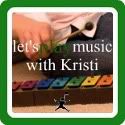Red, yellow and blue.
In Let's Play Music, each of the primary chords gets assigned their own color. This greatly helps our young students learn these all-important chords without having to go into explanations of I, IV, and V or tonic, dominant and sub-dominant. We put a lot of emphasis on recognizing, playing, singing, and understanding these chords in all their forms.
WHY is this?
I have a list of Top 10 Reasons!
I give credit for these to Dave Meadows, a Let's Play Music teacher in Phoenix.
10. Memorization is easier because you don’t have to memorize every single note in a piece of music. You just have to memorize the chord pattern. For example, instead of learning 342 different pieces of information for one song, when you learn it by recognizing and memorizing the chords, you can get it down to about 30 pieces of information.
9. Feeling the chord progression – When you train the muscles to know what each of the chords feels like, then when you see the chord on the page, your hand automatically knows where to go and how to be positioned. We can talk about chords all we want, but until you experience playing them (a lot) you don’t get the feel for them. The learning process for music is then sped up once the chords feel natural for your hands to play.
8. Tension and Release – All music is based on tension and release. It drives the song forward. Even when a song is sung a capella, there are underlying chords and harmonies that are felt despite not being played. It’s what provides the emotion in the music.
7. Can do more with written music – If you learn how to read music without actually understanding the chords, you are tied to what’s written on the page. You can’t do anything more with it. But when you know your primary chords and recognize them in the music you can easily add more notes based on the underlying chord, change the style the chords are played in, and basically pretty up the music however you want. And let's not forget that chords are the foundation for transposing music, too.
6. Faking it – Of course you prepare well for any performance, but sometimes the unexpected happens: your sheet music falls off the piano, the vocalist skips around in the song, you are missing a page of music, you make a mistake etc. If you know and can hear your primary chords, you can fake it, so no one knows there was a problem.
5. Recognizing key signatures – Knowing your chords helps you to be able to analyze music and easily tell what key you are in and whether it’s major or minor.
4. Improvisation –If you only know the melody to a song, you would be able to improvise an accompaniment. You can hear the change in the feel of the melody and match the appropriate chords to the music.
3. Composition – The culmination of Let’s Play Music is having all of our students compose a piece. Not every musician is going to be a composer, but they all should be encouraged to learn the skill. It will help them appreciate music more, be better analyzers of music, understand what they’re playing better, and be more excellent musicians. You have to know your chords to be able to come up with an accompaniment for a melody you compose.
2. Trust the Experts – Great musicians know them and Let’s Play Music teaches them, so they must be important!
1. Fun! You can have more fun with music when you understand it!
There are, of course, more chords than the three primary chords. Other chords add interest and character to a song, but 90% of music is made up of our primary chords.
Learning chords = learning music!
Subscribe to:
Post Comments (Atom)








No comments:
Post a Comment